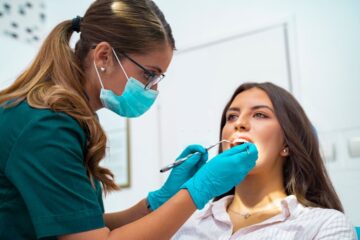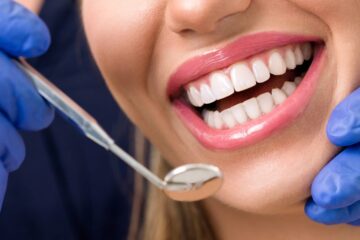When you’re considering Invisalign for teeth straightening, you might be surprised to learn that the speed of tooth movement isn’t solely dependent on the aligners themselves.
As a professional in the field, it’s important to understand that several factors play into how quickly your teeth can adjust to their new positions.
You’re likely aware that Invisalign offers less noticeable alternatives to traditional braces, but the intricacies of treatment duration and effectiveness are often overlooked.
As we unpack the variables that influence the pace of your orthodontic journey, you’ll discover why some people see rapid results while others may require more time.
Stick with us to uncover the critical elements that determine the rate of your progress and learn how to potentially expedite your path to a perfect smile.
Key Takeaways
– The duration of Invisalign treatment can be influenced by factors such as aligner compliance, complexity of the dental case, and the biological response of teeth and gums.
– Individual variation in case complexity and tooth response can affect the timeline expectations for Invisalign treatment.
– Factors such as the malleability of bone structures, complexity of dental issues, and diet considerations can impact tooth movement in Invisalign treatment.
– To maximise efficiency in Invisalign treatment, it is important to commit to wearing aligners for the recommended hours, practise proper oral hygiene, attend scheduled appointments, and follow the orthodontist’s instructions.
Understanding Invisalign Treatment
Invisalign treatment employs a series of custom-made, clear aligners that gradually shift your teeth into their desired positions with precision and comfort. These aligners offer clear advantages over traditional braces, including aesthetics, as they’re virtually invisible, and flexibility, since they can be removed for eating, brushing, and flossing.
However, treatment misconceptions often lead to unrealistic expectations. It’s crucial to understand that the effectiveness of Invisalign is highly dependent on patient compliance. You’re expected to wear the aligners for about 22 hours per day, only removing them for meals and oral hygiene.
The material technology behind Invisalign, a patented thermoplastic called SmartTrack®, is engineered for optimal tooth movement. This material provides a constant force on the teeth, allowing for controlled movement that’s both predictable and gentle.
Each aligner is worn for approximately one to two weeks before progressing to the next in the series, steadily moving your teeth towards the planned alignment. The total duration of treatment varies depending on the complexity of your case and can range from a few months to a couple of years.
Average Timeline Expectations
While understanding the Invisalign process is fundamental, you’re likely also curious about the duration of treatment you can expect for your specific dental alignment needs. Generally, the average timeline for Invisalign treatment ranges from 12 to 18 months, but this can vary significantly based on individual circumstances. Here’s what you should consider:
– Treatment Phases: Invisalign involves several phases, starting with an initial consultation, progressing through multiple sets of aligners, and concluding with a retention phase to ensure your teeth stay in place.
– Individual Variation: Every mouth is unique, and factors such as the complexity of your case and how your teeth respond to treatment can lengthen or shorten your timeline.
– Compliance: The success and speed of your treatment heavily depend on wearing the aligners for the recommended 20-22 hours per day.
Expect some initial discomfort as your teeth begin to shift. This is a normal part of the process as your teeth gradually move to their new positions. Your orthodontist will monitor your progress and make adjustments as needed, ensuring your treatment stays on track and is as efficient as possible.
Factors Affecting Tooth Movement
Several factors can influence the rate and effectiveness of tooth movement during your Invisalign treatment, including the biological response of your teeth and gums, the complexity of your dental issues, and your adherence to the prescribed wear schedule. Unlike traditional braces, which are adjusted by an orthodontist, Invisalign aligners rely on your commitment to wearing them at least 22 hours a day. Infrequent use can significantly slow down treatment progress.
The biological response to Invisalign varies per individual, affecting how quickly your teeth can shift. Age, bone density, and the health of your periodontal tissues play critical roles. Younger patients often experience faster movement due to more malleable bone structures.
In terms of braces comparison, both Invisalign and conventional braces face challenges with complex dental cases. Rotations and significant bite adjustments may take longer, regardless of the orthodontic method.
Diet considerations are also paramount. Hard or sticky foods can damage traditional braces, but with Invisalign, you have the freedom to consume a wider range of foods, as the aligners are removable. However, this advantage hinges on meticulous oral hygiene and promptly reinserting aligners after eating to maintain consistent pressure on your teeth.
Tips to Maximise Efficiency
Understanding the factors that affect tooth movement is crucial; now, let’s focus on optimising your Invisalign treatment with some practical tips to ensure the most efficient results.
Proper hygiene and appointment adherence are instrumental in maximising the efficiency of your Invisalign journey. Here are three essential tips to follow:
– Wear Your Aligners Full-Time: Commit to wearing your aligners for the recommended 20-22 hours per day. Only remove them for eating, drinking anything other than water, and for your oral hygiene routine.
– Maintain Optimal Oral Hygiene: Ensure you’re practising proper hygiene by brushing and flossing your teeth after each meal before reinserting your aligners. This prevents the buildup of harmful bacteria and keeps your teeth and aligners clean, which is pivotal for effective treatment.
– Stick to Your Scheduled Appointments: Appointment adherence is key. Attend all scheduled check-ups with your orthodontist to monitor progress and make timely adjustments. Skipping or postponing appointments can delay the treatment process and extend the time your teeth take to move into the desired position.
Monitoring Progress With Invisalign
Monitoring your Invisalign treatment’s progress is essential, as it ensures that your teeth are moving according to the planned treatment timeline and allows for timely adjustments if necessary. Orthodontic check-ins are a critical component of this monitoring process. During these appointments, your orthodontist will evaluate the fit of the aligners and the movement of your teeth to ensure everything is advancing as expected.
Progress tracking with Invisalign typically involves comparing the current position of your teeth with the initial treatment plan. This comparison is often facilitated by advanced imaging techniques and software that can highlight even minute changes in tooth position over time. The precision of Invisalign technology allows for detailed assessments at each stage of the treatment.
Between orthodontic check-ins, you’re encouraged to monitor your own progress. You should expect to see subtle changes in your teeth alignment as you progress through the series of aligners. Any significant discomfort, aligner fit issues, or lack of visible progress should prompt a discussion with your orthodontist to determine if any adjustments to your treatment are warranted.
Adhering to the prescribed wear schedule and attending regular check-ins will contribute to the optimal outcome of your Invisalign treatment.
Frequently Asked Questions
Can Invisalign Treatment Cause Changes in My Speech, and if So, How Can I Adapt to It?
Invisalign may temporarily affect your speech, but you can adapt with speech exercises and pronunciation tips to quickly regain clarity and confidence in your communication. Practice consistently for the best results.
How Does Invisalign Affect Oral Hygiene Practices, and Are There Any Special Cleaning Techniques Required for the Aligners?
You’ll need to practise diligent aligner maintenance for optimal oral hygiene. Rinse and brush your aligners daily, and follow specific hygiene tips, like avoiding hot water, to keep them clean and clear.
What Is the Protocol if I Accidentally Lose or Damage an Invisalign Aligner During My Treatment?
If you lose or damage your aligner, immediately contact your orthodontist for an aligner replacement. They’ll provide an emergency protocol to prevent treatment disruption and ensure your teeth’s movement stays on track.
Are There Any Restrictions on Consuming Certain Foods or Beverages to Avoid Staining or Damaging the Invisalign Aligners?
You’ll need to make dietary adjustments to prevent staining your aligners. Avoid dark beverages and certain foods for optimal aligner maintenance. This ensures your Invisalign treatment remains effective and your smile stays bright.
How Does the Cost of Invisalign Compare to Traditional Braces When Considering the Length and Complexity of Treatment?
Invisalign’s cost comparison to traditional braces depends on treatment duration and complexity. You’ll find prices vary, but often they’re competitively aligned, considering the convenience and cutting-edge technology involved.
Conclusion
Just like a plant reaching for sunlight, your teeth gradually shift towards perfection with Invisalign. Typically, you’ll notice changes within weeks, but the full journey can span months. Factors like bone density and compliance play their roles, so stick to your plan like glue. Keep tabs on your progress; it’s a meticulous marathon, not a sprint. Embrace the discipline, and soon, you’ll be flashing a smile as seamless as a masterfully woven tapestry.





